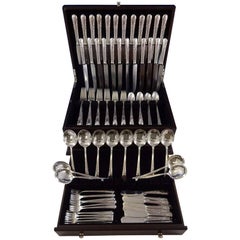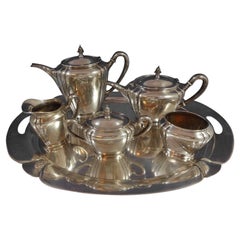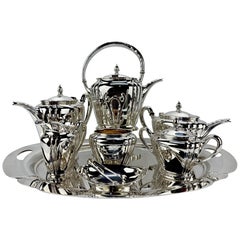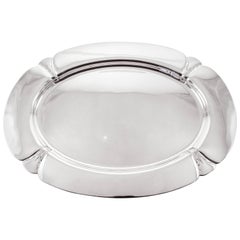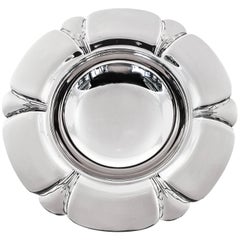International Silver Orchid
Vintage 1930s Sterling Silver
Sterling Silver
20th Century Tableware
Sterling Silver
Vintage 1930s Mid-Century Modern Sterling Silver
Sterling Silver
Early 20th Century American Art Deco Sterling Silver
Sterling Silver
Vintage 1930s Sterling Silver
Sterling Silver
Recent Sales
Vintage 1910s American Art Deco Sterling Silver
Sterling Silver
Vintage 1930s American Art Deco Sterling Silver
Sterling Silver
Vintage 1930s Sterling Silver
Sterling Silver
People Also Browsed
Antique Late 19th Century European Moorish Architectural Elements
Wrought Iron
Antique 19th Century English Chinese Chippendale Vitrines
Glass, Mahogany
2010s Italian Medieval Games
Marble, Sterling Silver
Antique 1880s Swiss Black Forest Table Clocks and Desk Clocks
Walnut
Antique 1890s Windows
Glass
Antique 19th Century French Napoleon III Stairs
Walnut
Late 20th Century Italian Baroque Sterling Silver
Sterling Silver
Early 20th Century American Art Nouveau Table Lamps
Bronze, Lead
20th Century French Country Barware
Chrome
20th Century European Figurative Sculptures
Vermeil, Silver
Antique 15th Century and Earlier Egyptian Egyptian Figurative Sculptures
Limestone
Antique Mid-19th Century English Victorian Tea Sets
Silver Plate, Sterling Silver
Antique Early 1900s German Rococo Dinner Plates
Porcelain
Antique Late 19th Century French Belle Époque Tableware
Porcelain
Early 20th Century American Edwardian Table Lamps
Bronze
Antique 16th Century Indian Jewelry Boxes
Silver
Finding the Right Sterling-silver for You
Dining and entertaining changed drastically when we began to set our tables with sterling silver for holiday gatherings, wedding receptions, engagement parties and, in some of today’s homes, everyday meals.
Often called the “Queen of metals,” silver has been universally adored for thousands of years. It is easy to see why it has always been sought after: It is durable, strong and beautiful. (Louis XIV had tables made entirely of silver.) Sterling silver is an alloy that is made of 92.5 percent silver — the “925” stamp that identifies sterling-silver jewelry refers to this number. The other 7.5 percent in sterling silver is typically sourced from copper.
Neoclassical-style sterling-silver goods in Europe gained popularity in the late 18th century — a taste for sterling-silver tableware as well as tea sets had taken shape — while in the United States, beginning in the 19th century, preparing the dinner table with sterling-silver flatware had become somewhat of a standard practice. Indeed, owning lots of silver goods during the Victorian era was a big deal. Back then, displaying fine silver at home was a status symbol for middle-class American families. And this domestic silver craze meant great profitability for legendary silversmith manufacturers such as Reed & Barton, Gorham Manufacturing Company and the International Silver Company, which was incorporated in Meriden, Connecticut, in 1898, a major hub of silver manufacturing nicknamed “Silver City.”
Today, special occasions might call for ceremonial silver designed by Tiffany & Co. or the seductive sterling-silver cutlery from remarkable Danish silversmith Georg Jensen, but there really doesn’t have to be an event on the calendar to trot out your finest tableware.
Event- and wedding-planning company maestro Tara Guérard says that some “investment pieces,” such as this widely enamored alloy, should see everyday use, and we’re inclined to agree.
“Sterling-silver flatware is a must-have that you can use every single day, even to eat cereal,” she says. “Personally, I want a sterling-silver goblet set for 12 to 20; I would use them every time I had a dinner party. Ultimately, there are no criteria for buying vintage pieces: Buy what you love, and make it work.”
Whether you’re thinking “ceremonial” or “cereal,” browse a versatile collection of vintage, new and antique sterling-silver wares on 1stDibs today.
- 1stDibs ExpertSeptember 10, 2024Yes, the International Silver Company produced real silver products. The hallmark "IS," however, refers to the brand and does not indicate purity, as International Silver mass produced silverplated flatware and holloware as well as sterling. In order to determine if the piece is real silver, look for the standard marks that indicate purity — the number 92.5 or 925 and the word “sterling” are indicators of sterling quality.
When an object is described as “silver” or “sterling silver,” it means that it contains 92.5% pure silver (the remaining 7.5% consists of copper and/or other alloys). The purity standard was first established in England and later adopted in the United States. The mark on antique British sterling-silver pieces is the lion passant (a lion walking to the left), which signifies a work is 92.5 percent pure sterling; if it’s not there, it is likely silverplate — or not English.
International Silver was a Connecticut conglomerate formed from 17 companies in 1898. It was once the largest manufacturer of silver and silver-plated products in the world.
Find antique International Silver Company serveware, platters and decorative objects for sale on 1stDibs.
